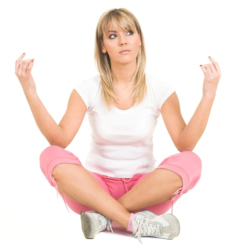Quick Guide to Iyengar Yoga
The Iyengar style of yoga focuses on posture and precision and as a result is one of the more challenging types of yoga. Iyengar yoga bases its principals on 200 types of asanas or poses divided into six “legs”. Each leg focuses on a particular benefit. For example one leg improves your strength while another improves your mental focus. Master all six legs, which is more difficult than it sounds, and you will experience things that will literally change your life.
Much of the precision of this style of yoga comes from first mastering the 14 breathing regulation techniques called “pranayama”. By concentrating on your breathing first, you improve and deepen your focus on other things, which allows next the perfection of the postures.
The Uniqueness of Iyengar
Iyengar differs from other types of yoga in three ways:
- Sequence – By practicing postures in a different order, different mental and emotional effects can be derived.
- Timing – By focusing on doing each asana correctly without regard to time, more benefits can be extracted.
- Technique – Taking the time to focus on further refining the performance of asanas to derive maximum benefits.
To practice the postures correctly, the inhalation and exhalation of breaths must occur at the right places within the posture. Mastering breathing regulation first is what allows this to happen more easily. When first starting out performing a posture in Iyengar Yoga, you are encouraged to use chairs, cushions, blankets, bands and other exercise props that help you perfect the pose. As you become better at a posture, you can quit using the prop if you want.
Iyengar differs from other types of yoga in that it caters to standing poses. If you need to improve your leg strength and muscle, this is a good form of yoga to practice. It also is good to improve balance. Head and shoulder stands, or the reverse of standing poses, are also part of Iyengar yoga. They stretch and loosen muscles not exercised by other asanas along with promoting blood flow to the brain as you can imagine standing on your head.
More blood flow increases awareness and clearer thinking. This also increases flow to the pituitary and pineal glands thereby improve the functions of the body controlled by these glands, namely the regulation of several physiological processes (such as stress, growth and reproduction) and the secretion of melatonin, respectively. Because of its unique health benefits, and the fact that it is a “slower” form of yoga, it is a great form of yoga for older people that may be suffering from various diseases. The asanas direct energy to parts of the body affected, thereby promoting healing.
Because Iyengar yoga is difficult to master, you should first practice it as part of an instructor-led class. If none are in your area, then resort to watching instructional videos either from DVDs or YouTube.
